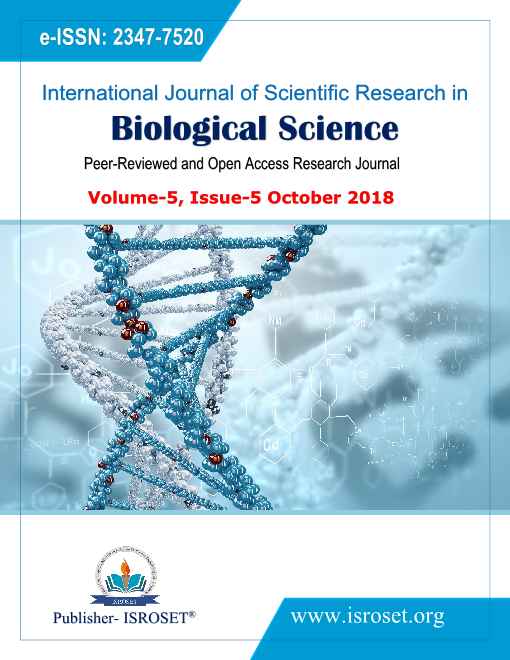Seasonal Monitoring of Waterbirds of Chhari Dhandh wetland in Kachchh District, Gujarat, India
Keywords:
Avifauna, Chhari Dhandh, Habitat, Seasonal variation, Waterbirds, WetlandAbstract
A study was conducted by Gujarat Ecological Education and Research (GEER) Foundation on waterbirds of Chhari Dhandh during the year 2016-17 covering all the major seasons. A total of 66 waterbird species were recorded that belonged to 14 families. Among all the families, maximum number of species were represented by Anatidae family (i.e., the family of ducks, geese and swans) and Ardidae family (i.e., the family of herons, egrets and bitterns) with 13 species belonging to each family. Chhari Dhandh supported maximum population of waterbirds (n=4,162) in winter. On the contrary, minimum waterbird population (n=362) occurred in this wetland during summer. The study has indicated that Chhari Dhandh has highest utility as waterbird habitat during winter season and therefore maximum management practices should be focused during this period. The study has also indicated that open water and shoreland area support a large number of waterbird species and many of them are gregarious (occurring in congregation) calling for the need of focusing management efforts on these two habitats.
References
A. Grobicki, C. Chalmers, E. Jennings, T. Jones, & D. Peck, “An introduction to the Ramsar Convention on wetlands”, (previously The Ramsar Convention Manual), In Ramsar Convention Secretariat, Gland, Switzerland, 2016.
A. Ismail, F. Rahman and S. Z. Zulkifli, Status, “Composition and diversity of avifauna in the artificial Putrajaya wetlands and comparison with its two neighboring habitats”, Tropical Natural History Vol. 12, No., 2, pp. 137-145, 2012.
J. P. Shah, Y. B. Dabgar and B.K. Jain, “Quantitative analysis of aquatic macrophytes in certain wetlands of Kachchh District, Gujarat” Journal of Pure and Applied Sciences Vol. 19, pp. 11 - 13 ISSN 0975 – 2595, 2011.
S. N. Varu, “Nalsarovar of Kachchh-Chhari Dhandh (In Gujarati language)”, Vihang (a Gujarati newsletter), Vol. 2, 2007.
K. Tatu, “Wetland and waterbird heritage of Gujarat- An illustrated directory”, Gujarat State Forest Department, Govt. of Gujarat, pp. 1-690, 2012.
V. S. Vijayan, “Inland wetlands of India: conservation priorities”, Salim Ali Centre for Ornithology and Natural History, Coimbatore, pp. 1-532, ISBN: 8190213601, 2004.
A. Rahmani, R. J. Samanat, Y. N. Rao, R. Manakadan, C. R. A. Kumar, V. Natarajan, J. K. Tiwari, S. Javed, S. Kumar, “A study on the ecology of grassland of the Indian plains with particular reference to their endangered fauna”, Final Report, Bombay Natural History Society and Centre of Wildlife and Ornithology, 1997.
J. K. Tiwari, “Chhari Dhandh Conservation Reserve an IBA”, Collective journey towards conservation of Chhari Dhandh (Souvenir), pp. 11-13, 2009.
C. Bibby, M. Jones and S. Marsden, “Expeditionfield techniques-bird surveys”, Birdlife International, Cambridge, UK. pp. 137, 2000.
S. Ali, “The book of Indian birds”. Bombay Natural History Society and Oxford University Press. Mumbai, India, pp. 1-326, 2002.
R. Grimmett, C. Inskipp & T. Inskipp, “Birds of the Indian Subcontinent.”. Edn 2, Oxford University Press. Delhi, India, pp. 1-480. ISBN: 978-06-91153-490, 2011.
GEER Foundation, “Ecological Study of Chhari Dhandh”, Gujarat Ecological Education & Research Foundation, Gandhinagar, 2017.
R. J. Whittaker, K. J. Willis, “Field scales and species richness: towards a general, hierarchial theory of species diversity”, Journal of Biogeography Vol. 28, No., 4, pp. 453-470, 2001.
Downloads
Published
How to Cite
Issue
Section
License

This work is licensed under a Creative Commons Attribution 4.0 International License.
Authors contributing to this journal agree to publish their articles under the Creative Commons Attribution 4.0 International License, allowing third parties to share their work (copy, distribute, transmit) and to adapt it, under the condition that the authors are given credit and that in the event of reuse or distribution, the terms of this license are made clear.







